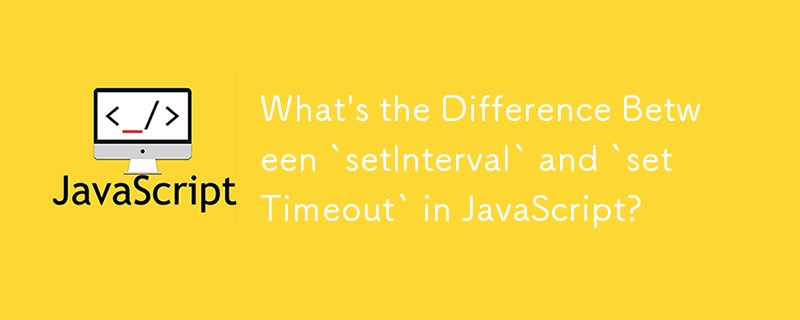

The Distinction between 'setInterval' and 'setTimeout' in JavaScript
In JavaScript, managing asynchronous operations is crucial, and two key functions that facilitate this are 'setInterval' and 'setTimeout'. Understanding their differences is essential for effective coding.
'setTimeout' vs 'setInterval':
setTimeout:
setInterval:
Key Differences:
Example:
Consider two scenarios:
Code:
// Alert after 5 seconds
setTimeout(function() { alert("Hello World!"); }, 5000);
// Log every 2 seconds
var intervalID = setInterval(function() { console.log("This is Running"); }, 2000);
// Stop logging after 10 seconds
setTimeout(function() { clearInterval(intervalID); }, 10000);The above is the detailed content of What's the Difference Between `setInterval` and `setTimeout` in JavaScript?. For more information, please follow other related articles on the PHP Chinese website!
 Why does localstorage expire so quickly?
Why does localstorage expire so quickly?
 The difference between get request and post request
The difference between get request and post request
 Commonly used database software
Commonly used database software
 python configure environment variables
python configure environment variables
 Detailed explanation of java displacement operator
Detailed explanation of java displacement operator
 Ouyi trading platform app
Ouyi trading platform app
 Is FIL worth holding for the long term?
Is FIL worth holding for the long term?
 What is an inline function
What is an inline function




